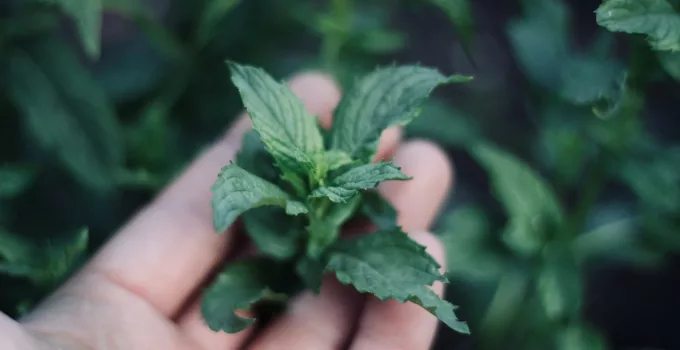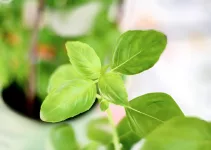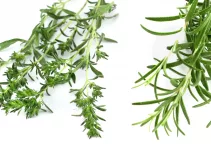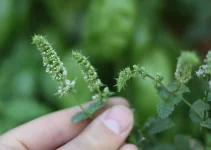Plants and vegetables leaves can be affected by different spots of different colors but today we’re going to answer the question why are mint leaves turning yellow.
I already wrote a post on why are mint leaves turning white and it wasn’t pretty because I don’t like it when I have to talk about the many causes that can affect our herbs, vegetables, gardens, greenhouses, and potted plants. Nothing is safe and I don’t enjoy talking about the causes.
But we have to know what can cause, for example, yellow spots on mint leaves so that, hopefully, we can revive our herbs and plants.
Table of Contents
Why Are Mint Leaves Turning Yellow? 8 Main Causes
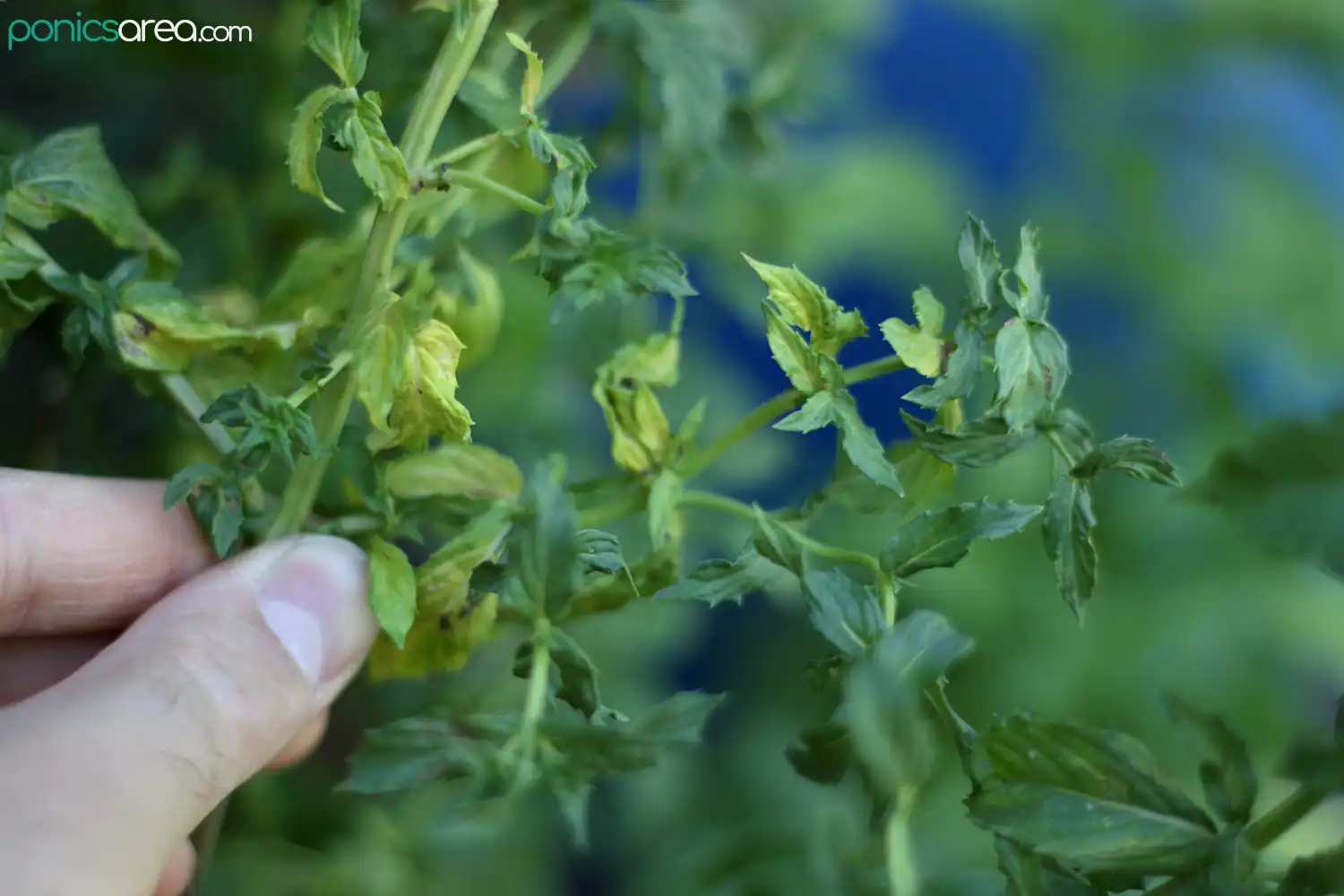
There are a few different answers to why are mint leaves turning yellow. Knowing the exact cause won’t be easy, which is always giving me a headache.
Usually, we have to go through an elimination process to pinpoint what’s causing different spots on leaves. Let’s see which are the main culprits for why mint leaves turn yellow.
1. Overwatering
This is quite the common answer to why are mint leaves turning yellow. It’s a simple mistake that quite a lot people can do just because they’re eager to provide their mint plant with lots of water for a plentiful growth.
Too much water for peppermint, spearmint and all the other varieties can lead to root rot, eventually killing the herb.
It might be surprising for some to think about overwatering being a cause for mint leaves turning yellow because this plant loves water. But you should never forget that even plants that love water need very good drainage.
Drainage can be represented by a good soil, that doesn’t have too much clay in its composition, or by holes at the bottom of the pot for potted plants, whether they’re placed outdoors or grown indoors.
2. Underwatering
Another common culprit for yellow leaves for plants and in our particular case for genus Mentha is forgetting to water your plant for quite a few days, especially when it gets too hot.
It can be less serious that overwatering and much easier to fix up if you catch this problem in time. Basically, you just have to pour a lot of water in the pot, wait a few hours and then do it again and wait for the wilting to disappear.
3. Lack of sunlight
As most plants do, mint plants need their presence in the sunlight (4-6 hours daily in the sun).
Many people state that their mint thrives in locations that receive 5 hours of sunlight per day but it also might need partial shade during the hottest hours of the day.
If you’re growing it indoors and it doesn’t receive its dose of natural light, you might need to consider grow lights.
4. Too small container
These herbs are known for being invasive. Their roots are called runners because they spread out so quickly becoming root-bound, which means that they need bigger pots to thrive as they mature.
If it becomes root-bound, the roots will prevent efficient water absorption, which is the same as if you were not watering it well. And that’s why having a too small container can be the answer to why are mint leaves turning yellow.
If there are roots emerging from your drainage holes, your plant is pot-bond.
It’s not unusual to start with a 6-inch pot and transplant your mint plant in a 20-inch pot in the future. If the pot is too small it might also grow more slowly.
Moreover, if you are interested in knowing more about this herb, you can also read my article on why is my mint plant flowering. In that post, I also cover the importance of pruning and how to do it, which is something that I don’t cover here.
5. Plant bugs and pests
There are a number of them that can cause yellow mint leaves and wilting because pests suck the sap out of the leaves.
We’ll analyze the various plant pests in just a moment so that you can look for them. The most common pests to be concerned with are spider mites and aphids.
6. Verticillium wilt
This is a soil-born fungal disease that can cause yellowing in mint leaves and in fruits and vegetables, trees and ornamental plants.
The problem with this fungal disease is that the herb cannot be saved. It’s best to eliminate all the other causes for why are mint leaves turning yellow before deciding that verticillium wilt is the cause.
7. Mint rust
It can be considered a cause for mint leaves turning yellow but, on the other hand, not really. As its name suggests, the leaves mainly exhibit small brown spots that imitate the rust we all know very well.
8. Nutrient deficiency
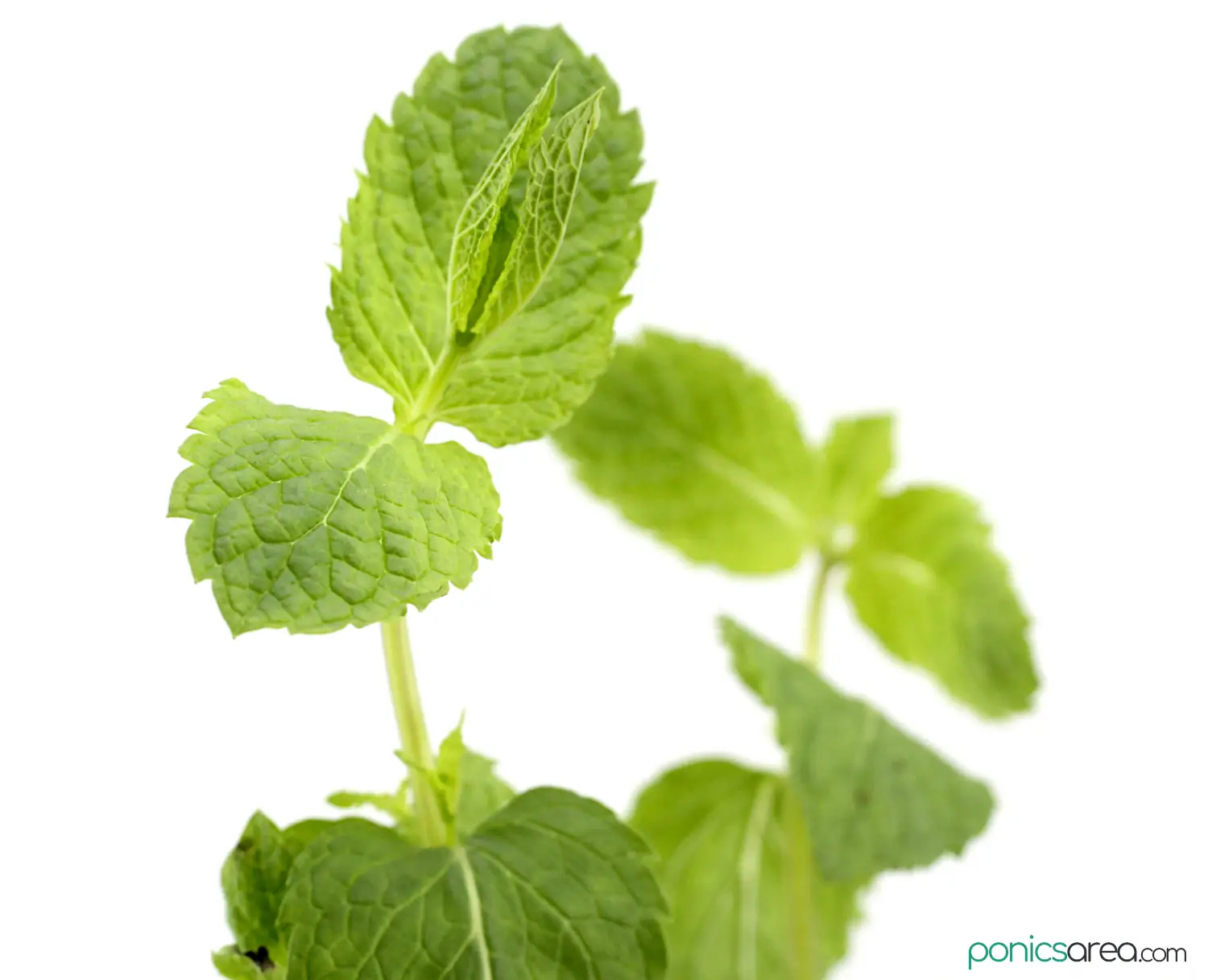
Nutrient deficiency can also cause the herb to look yellowish green because of a reduced production of chlorophyll.
In general, herbs that are grown in a medium-rich potting soil/mix or a soil with a lot of organic matter don’t need added fertilizer but they can benefit from it.
What I mean by that is that nutrient deficiency is not that common of an answer to why are mint leaves turning yellow. In order to know why you have yellow mint leaves in front of you, you should eliminate the above causes first.
Overwatering
This is a common answer to why are mint leaves turning yellow and it should be the first thing that people check, especially if they might suspect that they have watered their plant too much. On the other side is underwatering and we’ll talk about it immediately after.
Overwatering is especially prevalent for potted mint plants of any variety.
The yellow mint leaves can be a symptom of overwatering. But it’s also a visible symptom for something that you cannot see at first glance: root rot.
Root rot is the direct consequence of overwatering plants combined with poor drainage. All plants require good drainage offered by the quality of the soil first and by the holes at the bottom of the pot second.
The fact that you’re watering too frequently or pouring too much water can also be indicated by algae growth on top of the soil (green tinge on the soil).
Too much water will also leave it more vulnerable to disease, like powdery mildew, verticillium wilt, mint rust, etc. It’s definitely dangerous for any plant or herb.
How to Fix Overwatering
- transplant the plant to a new pot with new soil and with holes at the bottom of the pot
- for better drainage, add a layer of small pebbles at the bottom of the pot
- add compost/organic matter to the soil to ensure good drainage
- if the soil has too much clay, water won’t drain properly, it might be drowning your plant from too much water retention
Underwatering
If it’s not overwatering turning mint leaves yellow then it might be underwatering.
Underwatering is much more easily identifiable by the wilting of the plant. So, you will more likely have a wilted mint than yellow leaves.
Dusty, dull, pale leaves are another indication that your plant is not watered as it should.
You should always check the soil at the bottom of the pot, through the drainage holes, to ensure that it’s not only moist at the top and completely dry at the bottom.
How to Fix Underwatering
When it comes to causes for mint leaves turning yellow, underwatering is frankly the easiest to fix. As long as the leaves don’t get completely brown and brittle and start falling off.
To fix an underwatered mint just water it as soon as you can. For a potted plant, the easiest way is to put it in the sink and pour enough water that it liberally runs through the drainage holes. You won’t make a mess this way.
Wait for a few hours and water it again. By then, it should already look more alive.
Another option is to submerge the pot in a bucket of water and let the soil take what it needs. You need very good drainage if you’re doing this to revive a mint plant.
How to Water Mint Plants
I told you that overwatering is a very common answer to why are mint leaves turning yellow and it’s true.
But you must also know that mint is a herb that loves water. Unlike lavender, which is a drought-tolerant herb, or basil, which can be watered even only once a week, mint plants must be watered pretty often.
One of the most important factors for a mint to thrive is water. You should water it every day in the morning. In the evening, you can stick a finger in to check if the soil is still moist beneath the surface.
If the weather is too hot you might need to move up the watering to twice a day: once in the morning and then again in the evening.
Pests & Bugs that Turn Mint Leaves Yellow
There are a number of pests and bugs that can lead to the yellowing of mint leaves and wilting of the plant, as a consequence of sucking the sap.
Or they can cause white spots on leaves.
You must watch for either leaves turning yellow or for white spots on leaves when it comes to pests and bugs.
These pests and bugs are:
- spider mites infest plant leaves, leading to leaves turning yellow, wilting, in the end the leaves fall off, small yellowish/whitish specks are the first symptoms for spider mites
- to know for sure that spider mites are the answer to why are mint leaves turning yellow, illuminate the plant in the dark to see if there is a delicate web around the leaves and stems
- you can also use a magnifying glass, which works for checking out for all the other pests, as well – just make sure to look underneath the leaves because that’s where tiny creatures like these usually reside
- aphids are another category of pests to check for, they are usually present on the undersides of leaves, which is where they usually turn the leaves yellow, not on top
How to Deal with Pests and Bugs for Mint Plants
- give the plant a good bath with a hose or in the shower with the shower head – run water all over the plant to wash away as many as possible spider mites
- spray the plant with insecticidal soap spray – it works for organic herbs, too
- spray the plant with a mixture of 1 cup of alcohol diluted in 30 oz of water – after the spraying, you can wipe off the leaves with paper towels
- use a mixture of 1 tablespoon neem oil and 1/2 teaspoons dish soap to 1 quart of water (4 cups of warm water for a good mixing)
- if there are only a few leaves affected by aphids, you can prune them
Verticillium Wilt
Verticillium wilt is a serious fungal disease that resides in the soil and spreads to the plant or tree through its roots.
Those of you who have the mint planted in the garden and have eliminated all the other answers to why are mint leaves turning yellow, might consider that your plant is affected by this disease. Verticillium wilt is really not easy to diagnose so, you have to rely on an elimination process.
The symptoms might appear during mild temperatures, during spring or fall.
In the beginning, the leaves will turn yellow or red in the margins. Then, they will wilt and curl and then turn brown and drop off. This is the progression of the disease in terms of symptoms so, you will have to see if this succession also affects your mint plant.
The symptoms might only happen on one side of the plant, the other appearing completely healthy. In trees or shrubs it leaves dark discolorations because it attacks the vascular systems but in small herbs it’s harder to tell.
Unfortunately, verticillium wilt is not curable so, if this is the final answer to why are mint leaves turning yellow, you will just have to remove the herb and don’t plant anything else in that soil until you try soil solarization.

